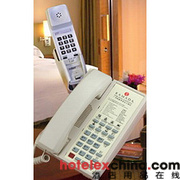Twenty years ago, travelers didn’t have many choices for booking hotel rooms. If you needed a room, you either booked directly through the hotel of your choice or worked with your preferred travel agent. But the growing prevalence of online travel agents has revolutionized how consumers search for and book hotel rooms.
Today, hotels must strike a balance between enticing guests to book directly and maintaining a presence on an array of third-party booking sites. And, in the face of sluggish demand and slumping revenues, lowering the cost of acquisition is a top priority.
The key to doing it all successfully? Developing a comprehensive distribution strategy that encompasses revenue, sales, e-commerce, marketing, guest relationship management and technology.
One of the most common mistakes hotels make in their distribution strategies is having inconsistent messaging across channels. Having third parties advertise your property as value-oriented can conflict with your own messaging on luxurious amenities or well-appointed rooms.
Discounting room rates is a popular strategy hotels use to win market share from OTAs, but it can actually hurt long-term business goals. Using discounts as a marketing tool will dampen a hotel’s rate integrity and make it harder to sell rooms at the regular rate once business picks back up. You can also find your bottom line hurting if you don’t consider the costs associated with each of these bookings.
Another way to discourage customers from making a direct booking? A poor website layout.
Anthony Gambini, CEO of Premiere Advisory Group, offers this advice: “Follow the critical booking path and eliminate barriers to conversion that will cause a potential guest to take their business elsewhere, or, worse, book on a higher-cost channel."
The hotel’s website should follow best practices for driving revenue and utilize the available booking tools, like private offers, strategic calls-to-action and upsell options.
One of the most important factors in any hotel’s distribution strategy is content, which must be individually optimized for every channel. In addition to keeping messaging consistent across channels, content should also be tailored to different audiences: leisure travelers for your website, travel agents for the global distribution systems and business travelers for your consortia.
It’s crucial that hoteliers have a comprehensive view of their competitors that includes more than just rate information. Staying up-to-date on what other hotels in the market offer in room types, amenities and rate promotions will enable hoteliers to create informed, competitive distribution strategies.
All hoteliers want to drive direct bookings, but it’s important to have a strategy that encompasses all channels. Gambini said: "Treat your distribution strategy like a financial portfolio and diversify."
By viewing all distribution channels as a whole, hoteliers can leverage the system to meet their business goals. Diversifying distribution channels will reduce any hotel’s reliance on OTAs and help it sustain long-term growth.









Service Hotline
Work Time:Mon-Fri 9:00-18:00
UTC+8

Sinoexpo Digital Platform
Copyright 2006-2024 Shanghai Sinoexpo Informa Markets International Exhibition Co., Ltd. All rights reserved
沪ICP备05034851号-77
 沪公网安备 31010402000543号
沪公网安备 31010402000543号